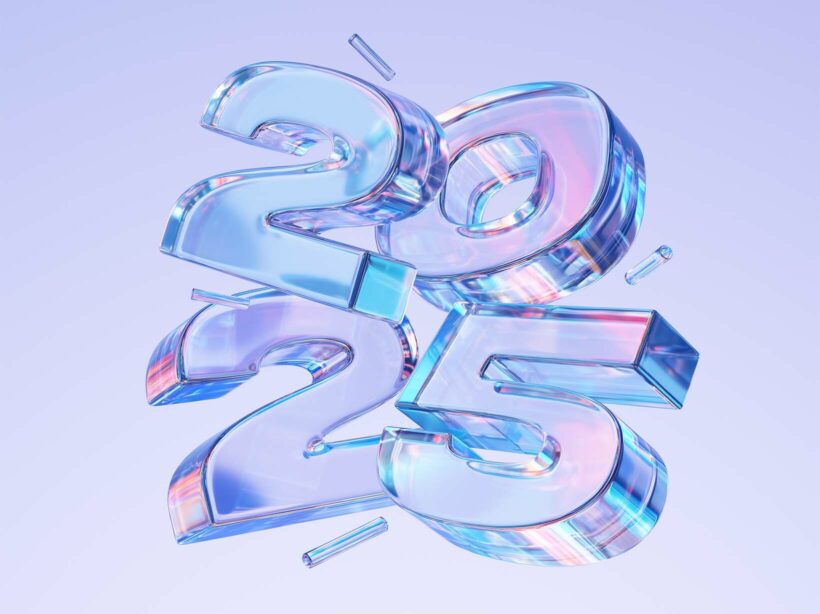How are we at the end of 2024 already? It feels like only yesterday that we were sitting right in this very spot asking, “how are we at the end of 2023 already?”
In any case, here we are — which means it’s time for that one special holiday tradition specifically mandated by our Marketing department: our blog about which visual web design trends are going to be hottest throughout the coming year. Only this time around, we’re giving you, dear reader, the opportunity to weigh in as well. Do you agree with our predictions? Let us know below (and maybe next year blogs that incorporate surveys will be on everyone’s list of trends for 2026.)
As we move into 2025, design trends are blending innovative technology with a deeper emphasis on human connection. From dark mode and playful accents to an increased focus on inclusivity, the themes emerging this year underscore a balance between creativity and accessibility. This post explores the top design trends to watch, providing insights on how they can be applied thoughtfully to create engaging and authentic experiences for users.
Dark Mode Slowly Creeps Along
Dark mode has become a standard on operating systems, but website adoption has been slower. While popular, dark mode design requires extensive adjustments to branding and color palettes, and often presents technical challenges. Until automation catches up, adding dark mode will remain time-intensive.
Is Minimalism Still a Big Deal?
Minimalism’s clean aesthetic has become prevalent across a number of sectors. The fashion industry has been one prominent example. However, many brands are beginning to reconsider this approach, with some returning to traditional logos to avoid the blandness associated with certain minimalist styles. If you’re looking for an example outside the fashion industry, check out Microsoft’s new 3D illustration style with detailed lighting and translucent glass effects.
The key for brands is to align with their unique identity rather than chasing trends. As seen in high-profile rebrands like Burger King and Pizza Hut, success comes when brands stick with the visuals that truly resonate with audiences.
Even More Inclusive People Images
Inclusivity in visual media is evolving, with companies expanding representations to include disabilities, nonbinary identities, and various racial backgrounds. This trend moves beyond general categories to focus on individuality, showing a more nuanced human experience. Here’s our go-to list for finding inclusive images for your next blog or social post.
Playful Accents
Playful typography, ornamental elements, stickers and scribbles are seeing a resurgence, adding warmth and character to designs. Expect to see more ‘inflatable’ or ‘melty’ type treatments in packaging and branding. These organic elements bridge the physical and digital, reminiscent of creative touches like 2023’s Spotify Wrapped.
Return to the 90s and 00s
The nostalgia for 90s and 00s styles has influenced fashion, packaging, and digital design. However, rather than simply imitating, brands should aim to capture the underlying spirit of those decades — focusing on authenticity and individuality.
Proof of Humanity
In an era of rising digital distrust (hello artificial intelligence), brands need to show authenticity. This can mean avoiding generic stock photos in favor of real employee photos (which, trends aside, is something we’ve always urged our clients to do) and providing verifiable information to establish trust.
Customizable UI
User customization options are expanding, especially on platforms like iOS and Android, where users can personalize themes and icons. Young audiences are definitely embracing this trend, favoring platforms that allow for a tailored experience; however, it’s still too early to tell whether the OS trend will cross over to web design.
Cool, But What About AI?
AI in design is now mainstream but requires careful use, as AI-generated content very often needs to be refined by actual humans. While AI-driven photo editing is gaining ground quickly, it also raises serious questions about authenticity. Many companies now publish guidelines on responsible AI use, typically detailing their efforts to ensure transparency and accountability while addressing and mitigating bias.
Incidentally, our current policy at Kanopi is not to use AI in the generation of deliverables. However, we’re also keeping a close eye on developments in this area.
Final Thoughts (for the next 11 months, at least)
Design in 2025 will center on striking a harmony between the digital and the human, the bold and the soothing. By embracing these trends, brands can forge stronger connections with their audiences, combining aesthetic appeal with functionality and inclusivity.
Finally, let’s be honest — by 2025, there will probably be more blog posts about ‘emerging design trends’ than there are actual trends. Just remember: for every new color palette, there’s a designer somewhere writing a thousand-word piece on why this is the year of ‘soothing yet bold’.







